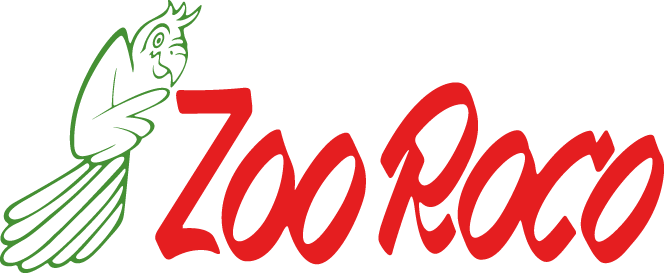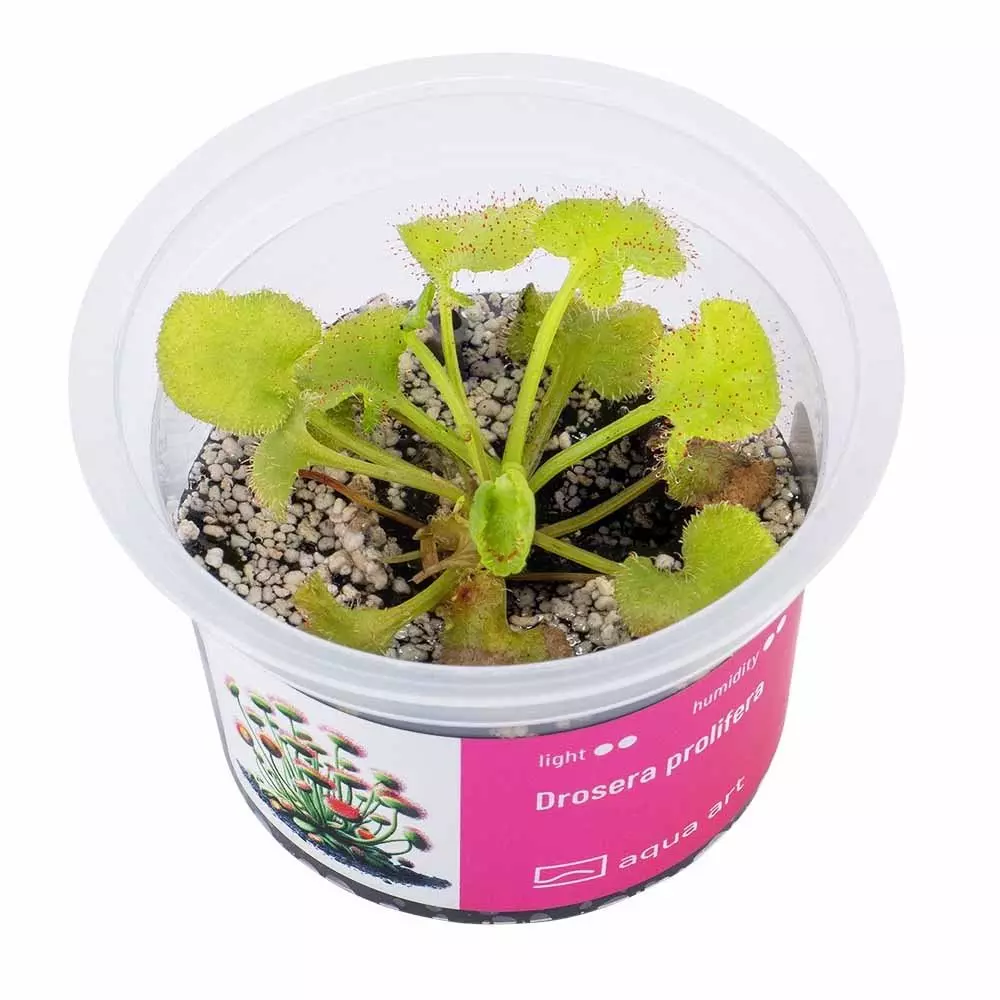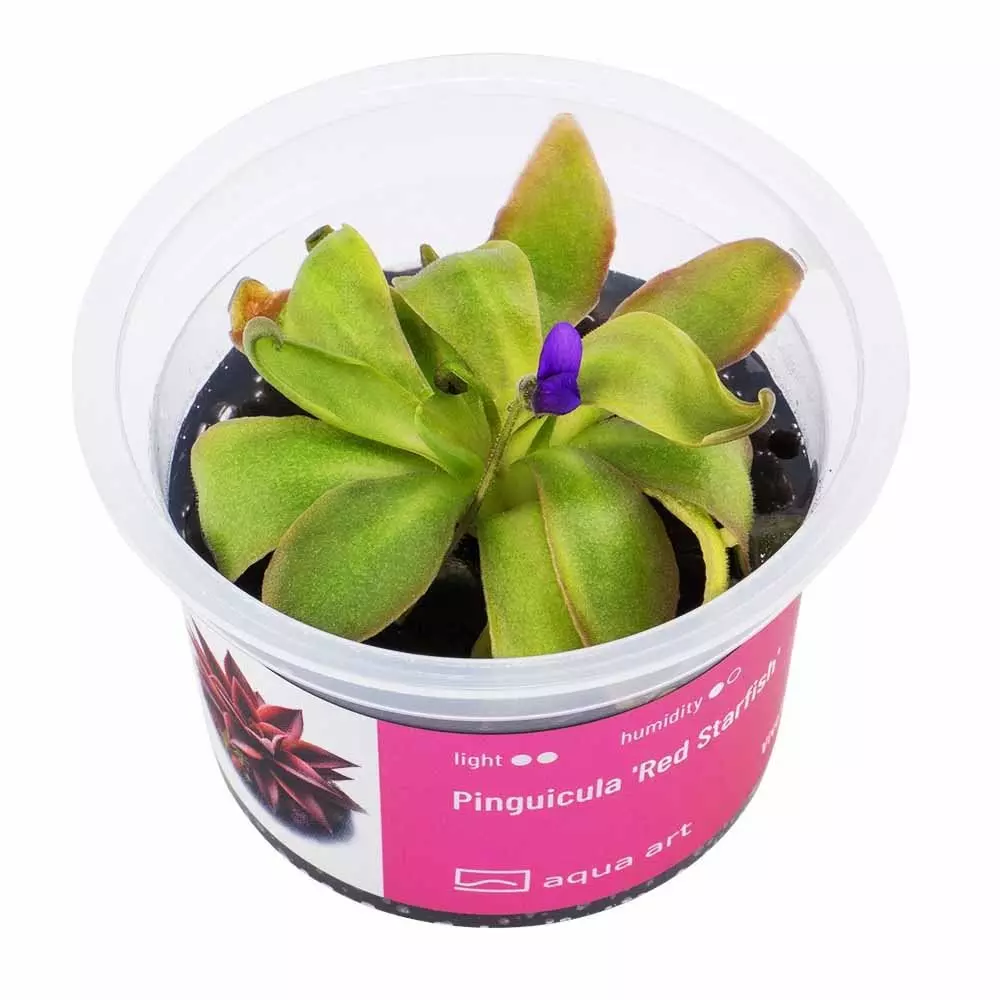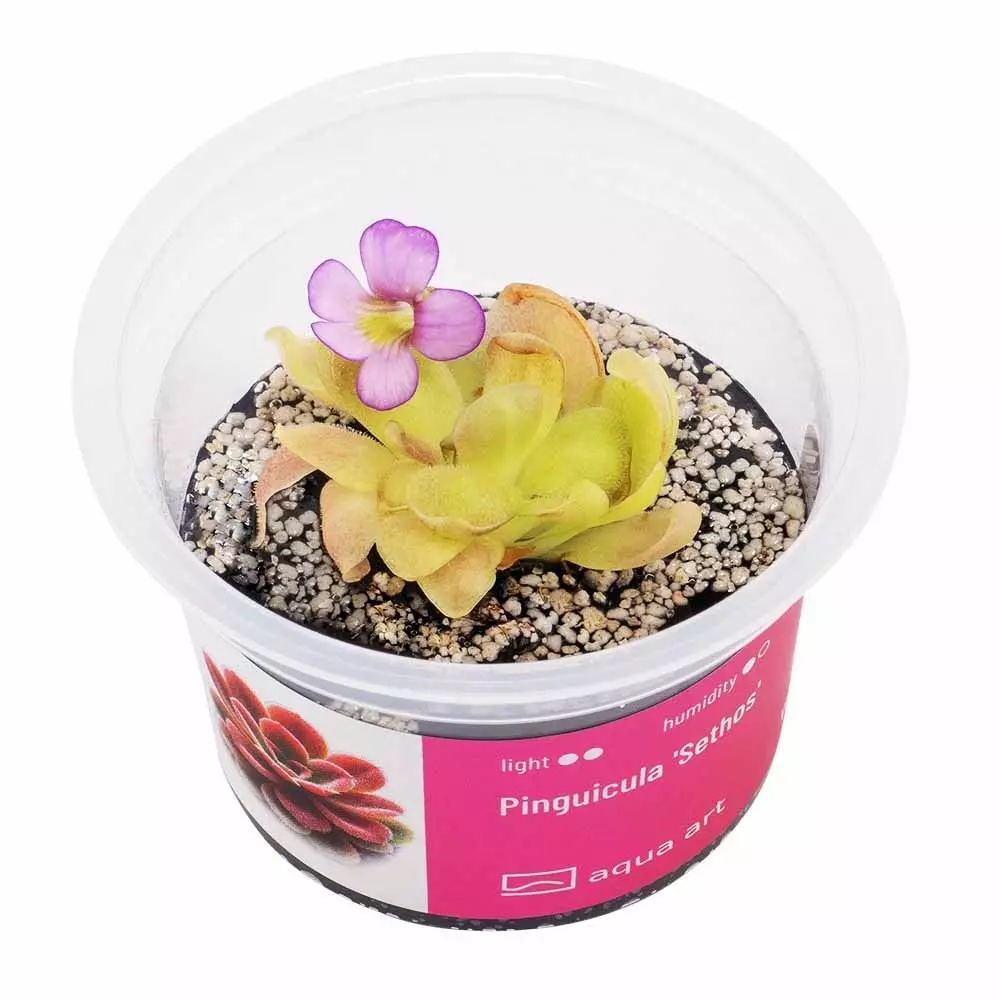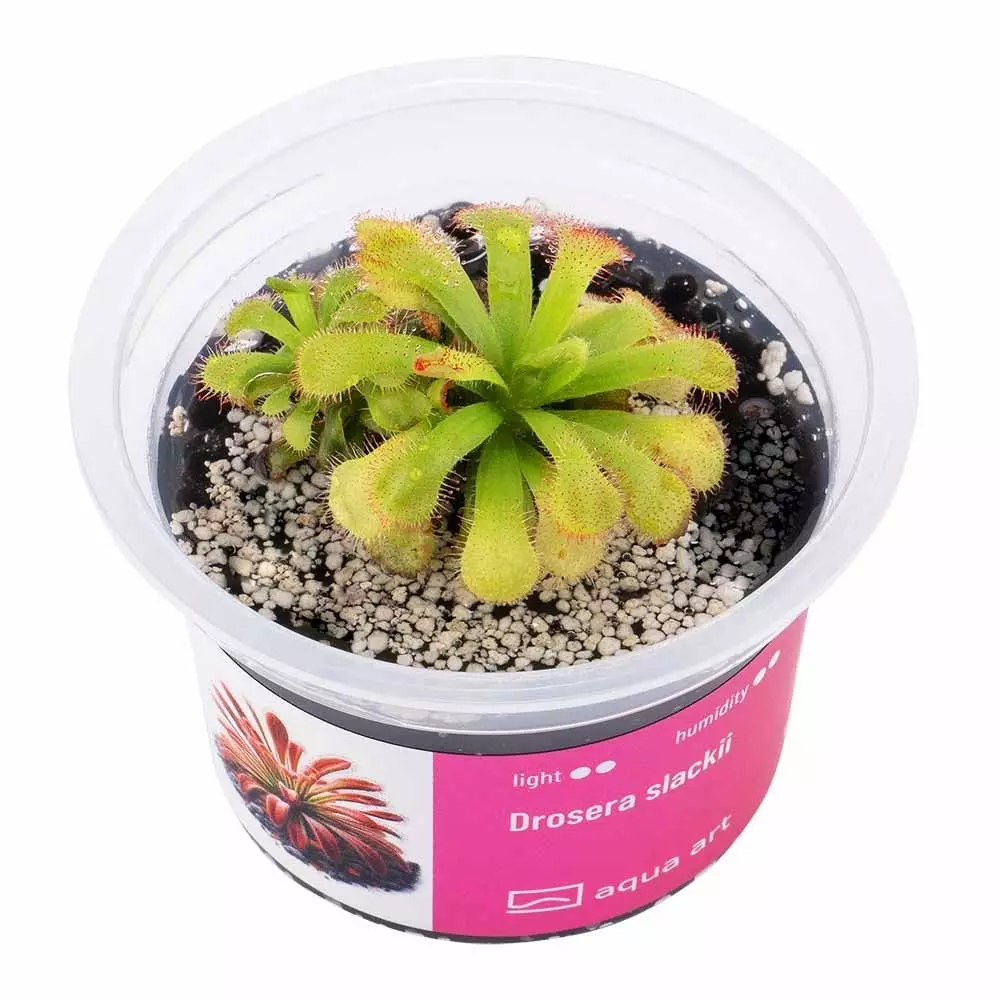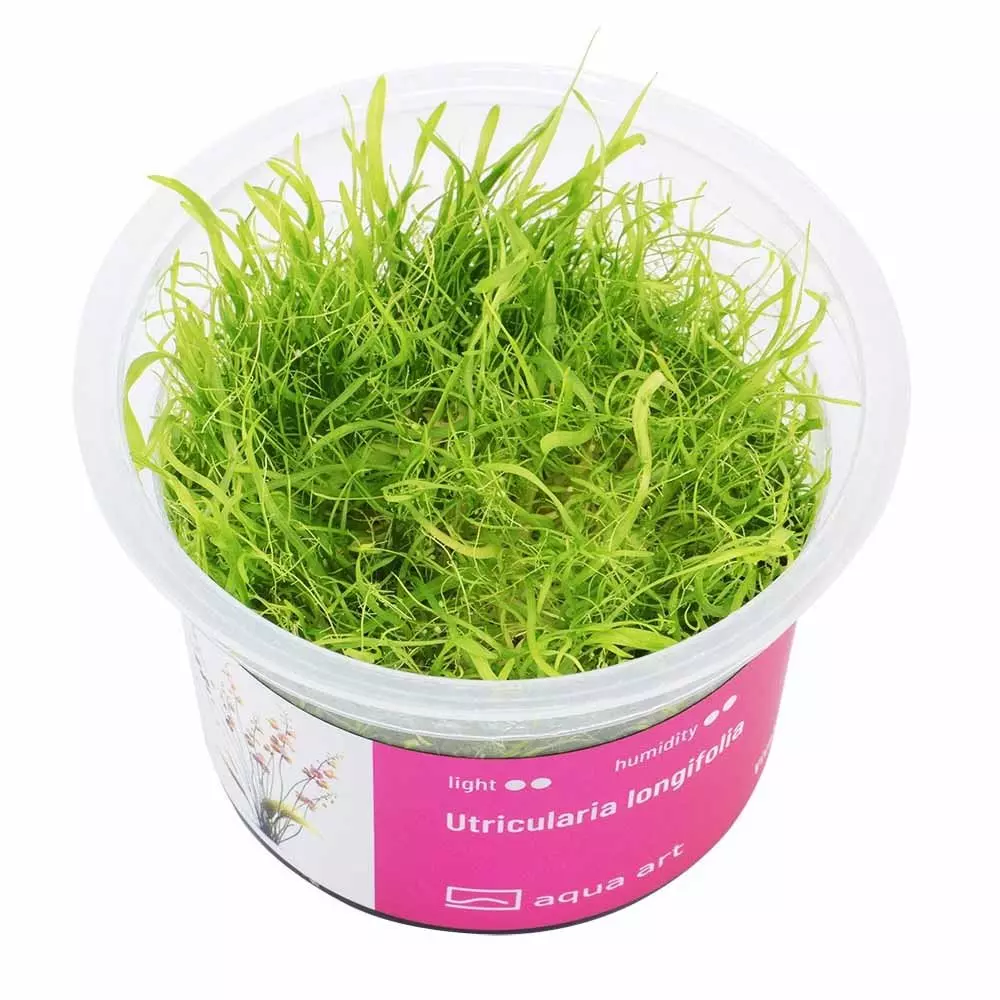















CHF 12.90
Stock: 2
Available, delivery time: 1-3 days

Carnivorous plant - Pinguicula Cherry Blossom
- supplied in an in vitro cup
- Diameter up to 5.5cm
- Humidity: 50-80%
- Temperature: 22-29 °C
- Purple flower
Size:
The diameter of the rosette can reach up to 5.5 cm.
Flowers:
Flowering time: Mainly in spring and summer. The cherry blossom-like flowers are usually pink with a white or light-colored throat. The stem is long and slender, with a single flower per stem.
Light:
Pinguicula Cherry Blossom prefers bright, indirect light with occasional direct sunlight.
Substrate:
A well-drained mixture often consisting of peat, perlite and sand.
Feeding/fertilizing:
Avoid fertilizing the substrate! The plant gets all the nutrients it needs from the prey it catches or eats.
The humidity should be between 50-80%.
The ideal temperature for this plant is 22-29 °C
Propagation is by leaf cuttings
0 of 0 reviews
Login
Customers also bought
Similar products
Customers also viewed
